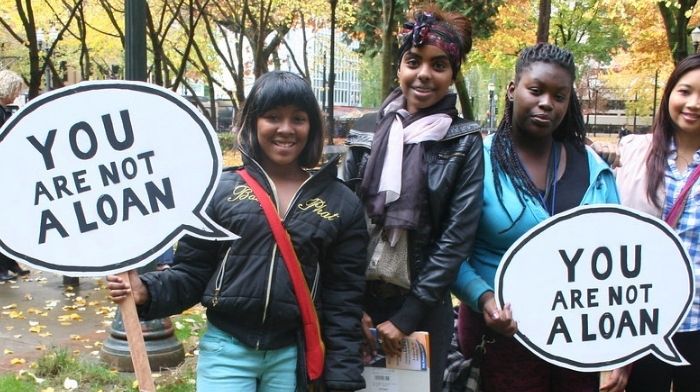
By Beth Akers for RealClearEducation
In the current political climate, arguing against free college and student-loan cancellation doesn’t make you very popular among a particular crowd.
But one thing that’s clear is that many people are upset about loans but don’t know how they work.
Multiple misconceptions surround student debt and college finance that make people more upset than they need to be, which can lead to poor decision-making when it comes to education or finances. So let’s clear up a few things.
RELATED: A Defeat In The Courts For Biden’s Racist ‘Equity’ Policies
Student debt isn’t an inescapable life sentence. The political discourse surrounding student debt would have you believe that unaffordable student loans are inescapable, but that’s pretty far from the truth for the average borrower.
Most borrowers’ monthly loan payments are affordable based on their income. Those high balances that newspapers like to write about are exceedingly rare: only 7 percent of borrowers carry more than $100,000 in student debt, thus making these high-balance borrowers, such as doctors and lawyers, the minority.
They don’t need our collective pity. Rather, it’s those with the smallest balances, and the highest rates of default, that need more assistance. These borrowers are often those who didn’t finish school and therefore don’t see the returns of a degree.
Even if you haven’t seen financial returns on your degree, you may be in luck. Over the past decade and a half, policymakers have built a comprehensive safety net that gives borrowers a break when their loan payments are unaffordable.
The Department of Education’s income-driven repayment (IDR) plans allow any student borrower to set his or her monthly payment to a percentage of their monthly income without major penalties.
While it can be difficult to choose from and enroll in IDRs, these plans can bring huge financial benefits for those who qualify.
The student loan crisis isn’t a product of a predatory lending industry. The vast majority of U.S. student debt (over 90 percent) was issued under federal student-loan programs.
When you want to point a finger at someone for this problem, don’t point to Wall Street but Capitol Hill. It’s fair to refer to the federal student-loan program as predatory since it makes loans available regardless of whether the borrower will be able to repay.
The Department of Education hands out loans without considering future affordability. If you’re heading into a program of study like fine arts, statistics suggest that your degree won’t pay a huge dividend, and you may be stuck with a loan that you can’t repay.
RELATED: Feds Spent $3 Million Taxpayer Dollars To Study If Evicted People Have Unsafe Sex
In a sane world, there would be protections against this kind of lending. This is an obvious solution but one that’s often rejected by people who think that part of the American dream is being able to “follow your passion” at any individual or social cost.
Student loans aren’t just for the economically disadvantaged. Student debt is a tool that many well-off families use to send their children to expensive colleges and graduate schools.
In 2015–16, students from the highest-earning households borrowed about $10,500 more than students from the lowest-earning households.
Borrowing through the federal loan program is relatively cheap compared to consumer credit. Those with financial savvy can figure out ways to make paying with student loans cheaper than paying with cash – such as using low-interest student loans to pump money into a 401k.
A lot of students are better off borrowing for college and investing the cash they have on hand.
Plenty of problems need fixing in our system of higher-education finance. We need significant reform to make the safety nets work better for more people. We also need to stop writing loans that borrowers can’t repay.
But to make meaningful improvements to the system, we need first to have our facts straight. These common misunderstandings are a good place to start.
Syndicated with permission from RealClearWire.
